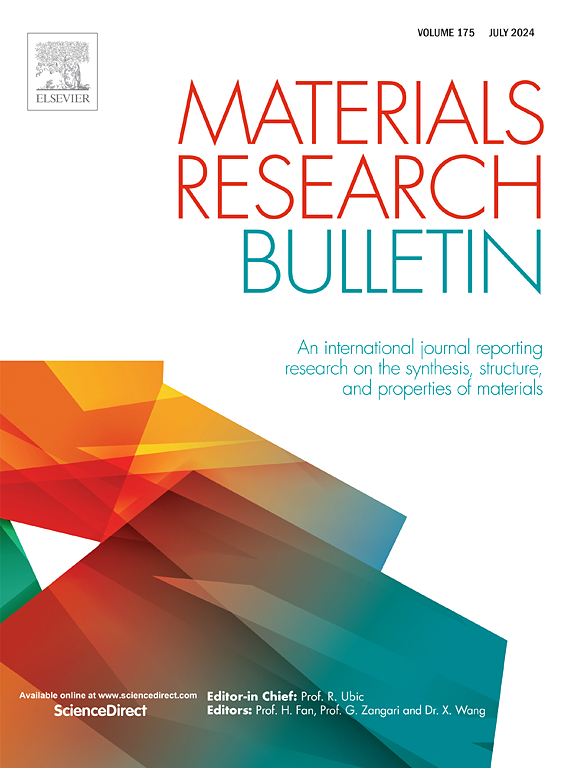Preparation of high-performance Ag2Se thermoelectric films and devices for wearable energy harvesting
IF 5.3
3区 材料科学
Q2 MATERIALS SCIENCE, MULTIDISCIPLINARY
引用次数: 0
Abstract
Owing to the high thermoelectric (TE) performance near room temperature, Ag2Se has been recognized as a potential alternative to Bi2Te3 for self-powered wearable electronics. Herein, we report a novel template-assisted approach using Ag NWs to synthesize Ag2Se nanowires (NWs), yielding more uniform morphology compared to Se NW-templated methods. This approach enables the fabrication of dense, thickness-controlled films with exceptional TE performance, reaching a power factor of 2011 μW/mK2 at 390 K. Moreover, the film demonstrates excellent flexibility and stability. Specifically, the electrical conductivity remains 92 % after 2000 bending cycles, and 95 % after 360 days without encapsulation. This outstanding flexibility stems from the synergy between the nylon substrate and the Ag2Se porous nanostructured film. A flexible TE device assembled by the films achieves a high power density of 7.3 W/m2 at a temperature difference of 32 K. We also explore potential applications of our flexible TE devices in solar-TE conversion.

可穿戴能量收集用高性能Ag2Se热电薄膜及器件的制备
由于在室温附近具有较高的热电性能,Ag2Se已被认为是Bi2Te3的潜在替代品,可用于自供电的可穿戴电子产品。在此,我们报告了一种新的模板辅助方法,使用Ag nw来合成Ag2Se纳米线(NWs),与Se nw模板方法相比,产生更均匀的形貌。这种方法可以制造致密的、厚度控制的薄膜,具有优异的TE性能,在390 K时达到2011 μW/mK2的功率因数。此外,该薄膜具有良好的柔韧性和稳定性。具体来说,在2000次弯曲循环后,电导率仍保持92%,在360天未封装后,电导率仍保持95%。这种优异的柔韧性源于尼龙衬底和Ag2Se多孔纳米结构薄膜之间的协同作用。由薄膜组装的柔性TE器件在32 K的温差下实现了7.3 W/m2的高功率密度。我们还探索了柔性TE器件在太阳能-TE转换中的潜在应用。
本文章由计算机程序翻译,如有差异,请以英文原文为准。
求助全文
约1分钟内获得全文
求助全文
来源期刊

Materials Research Bulletin
工程技术-材料科学:综合
CiteScore
9.80
自引率
5.60%
发文量
372
审稿时长
42 days
期刊介绍:
Materials Research Bulletin is an international journal reporting high-impact research on processing-structure-property relationships in functional materials and nanomaterials with interesting electronic, magnetic, optical, thermal, mechanical or catalytic properties. Papers purely on thermodynamics or theoretical calculations (e.g., density functional theory) do not fall within the scope of the journal unless they also demonstrate a clear link to physical properties. Topics covered include functional materials (e.g., dielectrics, pyroelectrics, piezoelectrics, ferroelectrics, relaxors, thermoelectrics, etc.); electrochemistry and solid-state ionics (e.g., photovoltaics, batteries, sensors, and fuel cells); nanomaterials, graphene, and nanocomposites; luminescence and photocatalysis; crystal-structure and defect-structure analysis; novel electronics; non-crystalline solids; flexible electronics; protein-material interactions; and polymeric ion-exchange membranes.
 求助内容:
求助内容: 应助结果提醒方式:
应助结果提醒方式:


